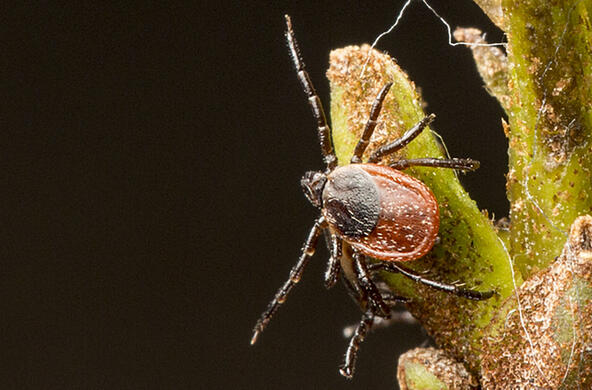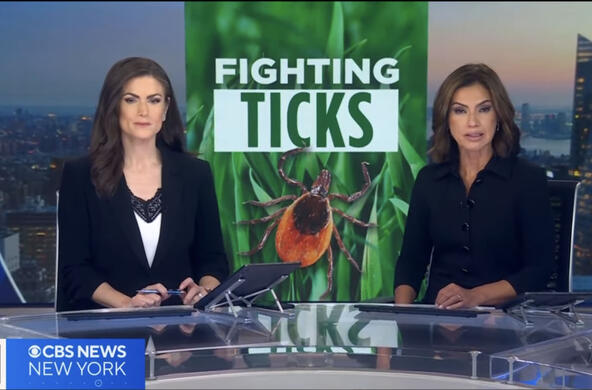Live fast. Die young. Leave a small, furry corpse.
That's the hell-bent, forget-about-the-future way of shrews, chipmunks, and white-footed mice.
And it may be why they're also great, little, scurrying reservoirs for the different bacteria that causes Lyme disease and anaplasmosis, as well as the parasitic agents that cause babesiosis.
That's the subject of new research conducted at the Cary Institute of Ecosystems Studies in Millbrook, N.Y.
Richard Ostfeld, a disease ecologist at the institute, studies the complex interplay of the environment and the human diseases lurking in its midst.
It's been established that little varmints like mice, chipmunks and shrews are the creatures that carry the Lyme disease bacteria -- Borrelia burgdorferi -- and infectious agents that cause other tick-borne diseases.
"We wanted to know why,'' Ostfeld said. "Why not squirrels or fox? Why not deer?''
One answer is that there a lot of these little guys around, running close to the ground -- maybe 20 or 30 per acre. Black-legged ticks, which spread the disease from scurrying mammals to humans, have lots of small mammal mice to bite.
But while plentiful, mice, chipmunks and shrews are not long-lived. They're on a low rung of the food chain. Fox, coyotes, hawks and owls all nosh on them. Domestic cats take them down. They get a year on the planet. At most, two.
Therefore, Ostfeld said, they are hard-wired to breed plentifully. If you aren't going to be around to create years of litters, you evolve into creatures that have lots of large litters quickly.
You also evolve into a critter that has a really weak immune system. Because you're not going to live long anyway, you don't waste energy developing a system to protect you against illness.
Black-legged ticks looking for a blood meal, are not fastidious.
But mice, chipmunks and shrews are welcoming hosts for the bacteria ticks spread. They're plentiful. They're low to the ground, so ticks can easily hop aboard. And they lack the immune systems that might compromise any infectious agents.
Therefore the pathogens that cause tick-borne diseases may have also evolved to set up housekeeping inside the safe environs of a white-footed mouse, a chipmunk or a shrew.
"It may be in your best interests to adapt to your host,'' Ostfeld said.
Another factor in the spread of Lyme and other tick-borne diseases is the humble acorn -- the great food source for many animals in the forests of the Northeast United States.
If there are lots of acorns in a year, then there will be lots of well-fed little scurrying things. They'll breed more and more of their progeny will survive.
The next year will be a good one for black-legged ticks, who will have more chances for a blood meal. The year after that, there will be a plentiful supply of pathogen-laden, tiny nymphal ticks emerging in late spring. When, looking for a blood meal, they attach themselves to humans -- and those humans can get sick.
The Cary Institute keeps a record of acorn crops each year. Ostfeld said the official numbers aren't in, but his observation is that 2014 will be a good acorn year.
"That means will have more mice in 2015,'' he said. "We could see a rise in Lyme diseases cases in 2016. It's likely.''








